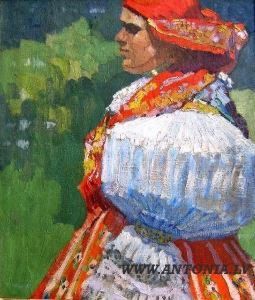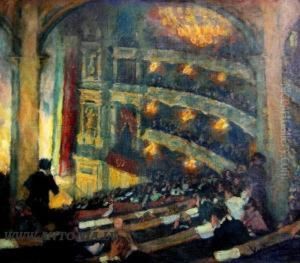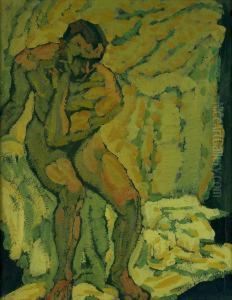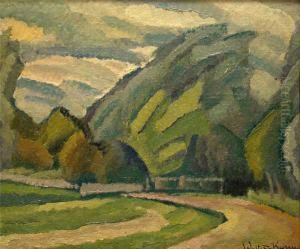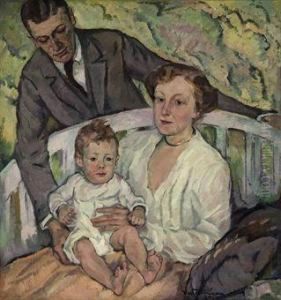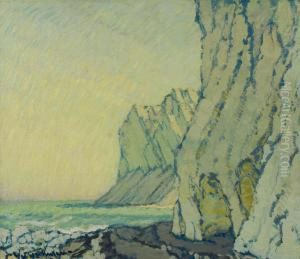Johannes Walter-Kurau Paintings
Johannes Walter-Kurau was a notable Latvian painter, born on December 12, 1869, in the city of Mitava (now Jelgava, Latvia), which was then a part of the Russian Empire. His artistic journey began under the tutelage of his father, who was also a painter. Walter-Kurau’s talent and interest in the arts were evident at an early age, which led to his formal education in art at the Imperial Academy of Arts in Saint Petersburg, Russia.
Throughout his career, Walter-Kurau was influenced by various art movements, but he is particularly recognized for his contributions to symbolism and art nouveau. He was also known for his impressionistic tendencies, which can be seen in his use of light and color. His works often depicted mythological and historical scenes, portraits, landscapes, and later included elements of expressionism.
In 1894, Walter-Kurau moved to Dresden, Germany, where he further developed his artistic skills and was exposed to new artistic influences. During his time in Dresden, he became associated with the 'Die Brücke' expressionist movement, although he maintained his unique approach to painting. His style during this period became more fluid and vibrant, which represented a shift from his earlier, more academic works.
After World War I, Walter-Kurau returned to Latvia, where he became a central figure in the Latvian art scene. He was a professor at the Latvian Academy of Art and influenced a generation of Latvian artists. His work during this time reflected a combination of his earlier training and the more avant-garde styles he had absorbed in Germany.
Johannes Walter-Kurau’s contributions to the art world were significant, and his works were widely exhibited during his lifetime. Despite facing personal challenges, including partial blindness, he continued to paint until his death. Walter-Kurau passed away on January 18, 1932, in Riga, Latvia. His legacy lives on through his paintings, which continue to be celebrated and studied for their innovative style and cultural significance within the Latvian national art heritage.
